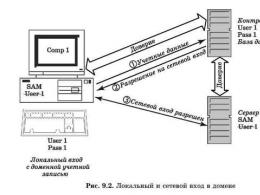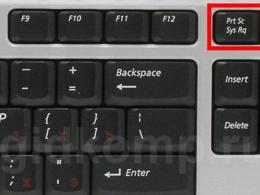How cell phone base stations work. Why is it called cellular

To do this, we suggest that you go to the Beeline company.
A huge number of BS - base stations have been installed on the territory of Russia. Probably, many of you have seen red and white structures towering in the fields or structures installed on the roofs of non-residential buildings. Each such base station is able to pick up a signal from cell phone at a distance of up to 35 km, contacting him via official or voice channels.

After you dialed the number of the desired subscriber on your phone, the following happens: the mobile phone finds the nearest BS, contacts it via the service channel and requests a voice channel. After that, the BS sends a request to the controller (BSC), which then goes to the communicator. If the called party is served by the same operator as you, the communicator will check the Home Location Register (HLR) database to find out exactly where the person you are calling is located and redirect the call to the correct switchboard, which will then transfer the call to the controller and then to the Base Station. And finally, the Base Station will contact the mobile phone of the right person and connect you with him. And if the one you want to talk to is a subscriber of another cellular operator, or you call a landline number, then the switch will “find” the corresponding switch of another network and turn to it. Sounds pretty confusing, right? Let's try to analyze this issue in more detail.
But back to the equipment. As we have already said, from the BS the call is transferred to the controller (BSC). Outwardly, it is not much different from the Base Station:

The number of base stations that are able to serve the controller can reach six dozen. The controller and the BS communicate via optical or radio relay channels. The controller controls the operation of the radio channels.
Below you can see what a switch is:


The number of controllers serviced by the switch varies from two to thirty. The switches are placed in large rooms filled with metal cabinets with equipment.



The task of the switch is to manage traffic. If earlier, in order to talk to each other, subscribers had to first contact the telephone operator, who then manually rearranged the necessary wires, now the switch does an excellent job with her role.



Inside the cars there are devices designed for data collection and processing:

Controllers and switches are under vigilant control 24 hours a day. Tracking is carried out in the so-called CKC (Air Control Center of the Network Control Center).
We all use mobile phones, but rarely does anyone think - how do they work? In this article, we will try to figure out how communication is actually implemented with respect to your mobile operator.
When you make a call to your interlocutor, or someone calls you, your phone is connected via radio to one of the antennas nearby base station (BS, BS, Base Station).Each cellular base station (in the common people - cell towers) includes from one to twelve transceivers antennas having directions in different directions in order to provide high-quality communication to subscribers within their range. Specialists in their jargon call such antennas "sectors", which are gray rectangular structures that you can see almost every day on the roofs of buildings or special masts.

The signal from such an antenna is sent via cable directly to the control unit of the base station. The base station is a combination of sectors and a control unit. At the same time, a certain part of the settlement or territory is served by several base stations connected to a special unit at once - local zone controller(abbreviated LAC, Local Area Controller or just "controller"). As a rule, one controller unites up to 15 base stations of a certain area.
For their part, the controllers (there may also be several) are connected to the main unit - Mobile services control center (MSC, Mobile services Switching Center), which for ease of perception is called simply "commutator". The switch, in turn, provides input and output to any communication lines - both cellular and wired.
If you display what is written in the form of a diagram, you get the following:  Small-scale GSM networks (usually regional) can use just one switch. Large ones, such as our “big three” operators MTS, Beeline or MegaFon, serving millions of subscribers at the same time, use several MSC devices interconnected at once.
Small-scale GSM networks (usually regional) can use just one switch. Large ones, such as our “big three” operators MTS, Beeline or MegaFon, serving millions of subscribers at the same time, use several MSC devices interconnected at once.
Let's see why such a complex system is needed and why it is impossible to connect the base station antennas to the switch directly? To do this, you need to talk about another term, called in technical language handover (handover). It characterizes the handover of mobile networks on a relay basis. In other words, when you move down the street on foot or in a vehicle and talk on the phone at the same time, so that your conversation is not interrupted, you should timely switch your device from one BS sector to another, from the coverage area of one base station or controller local zone to another, etc. Therefore, if the base station sectors were connected directly to the switch, it would have to carry out this handover procedure for all its subscribers itself, and the switch already has enough tasks. Therefore, in order to reduce the probability of equipment failures associated with its overloads, the scheme for constructing GSM cellular networks is implemented according to a multi-level principle.
As a result, if you and your phone move from the service area of one BS sector to the coverage area of another, then this movement is carried out by the control unit of this base station, without touching the more “high-priced” devices - LAC and MSC. If the handover occurs between different BSs, then LAC is already taken for it, etc.
The switch is nothing more than the main "brain" of GSM networks, so its operation should be considered in more detail. The cellular network switch takes on approximately the same tasks as the PBX in the networks of wired operators. It is he who understands where you are making the call or who is calling you, regulates the work of additional services and, in fact, decides whether you can currently make your call or not.
Now let's see what happens when you turn on your phone or smartphone?
So, you pressed the "magic button" and your phone turned on. On your SIM card mobile operator there is a special number called IMSI - International Subscriber Identification Number (International Subscriber Identification Number). It is a unique number for each SIM-card not only for your operator MTS, Beeline, MegaFon, etc., but a unique number for all mobile networks in the world! It is on it that operators distinguish subscribers among themselves.
When you turn on the phone, your device sends this IMSI code to the base station, which transmits it further to the LAC, which, in turn, sends it to the switch. At the same time, two additional devices connected directly to the switch come into our game - HLR (Home Location Register) And VLR (Visitor Location Register). Translated into Russian, this is, respectively, Register of home subscribers And Register of guest subscribers. HLR stores the IMSI of all subscribers in its network. The VLR contains information about those subscribers who currently use the network of this operator.
The IMSI number is transmitted to the HLR using an encryption system (another device is responsible for this process AuC - Authentication Center). At the same time, HLR checks whether there is a subscriber with this number in its database, and if the fact of its presence is confirmed, the system looks at whether he can currently use communication services or, say, has a financial block. If everything is fine, then this subscriber goes to the VLR and after that gets the opportunity to call and use other communication services.
For clarity, we will display this procedure using a diagram:
 Thus, we briefly described the principle of operation of GSM cellular networks. In fact, this description is rather superficial, because if we delve into the technical details in more detail, then the material would turn out to be many times more voluminous and much less understandable for most readers.
Thus, we briefly described the principle of operation of GSM cellular networks. In fact, this description is rather superficial, because if we delve into the technical details in more detail, then the material would turn out to be many times more voluminous and much less understandable for most readers.
In the second part, we will continue our acquaintance with the operation of GSM networks and consider how and for what the operator debits funds from our account with you.
While most of us take a landline phone for granted, the phone in your home is one of the most amazing devices ever made. If you want to talk to someone, all you have to do is pick up the phone and dial a few numbers. You can contact this person at any time and chat with him.
The telephone network is spread all over the world, so you can reach almost everyone on the planet. If you remember that only 100 years ago and even less, sending a written message to someone could take several weeks ...
Surprisingly, the phone is one of the most simple devices in your house. Principles telephone connection have not changed for almost a century. If you have a vintage phone from the 1930s, you can plug it into your phone jack and it will work just fine!
phone internals
The simplest phone consists of three parts:
1. Switch, connecting and disconnecting the phone from the network. This switch is commonly referred to as lever switch. It connects the phone to the network when you pick up the phone.
2. Ddynamic. This is the most common speaker the size of a 50 kopeck coin and a resistance of 8 ohms.
3. Microphone. In the past, telephone microphones were extremely simple and consisted of activated carbon granules sandwiched between two thin metal plates. The sound waves from your voice squeezed and unclenched the beads, changing their resistance and regulating the current flowing through the microphone.
And it will work! You can dial a number on this phone by quickly pressing the lever switch - all telephone switches still recognize " pulse dialing". If you pick up the handset and quickly tap the switch four times, the switch telephone company will understand that you typed "4".
The only problem with such a phone is that during a call you will hear your voice through the speaker.
Wires and cables
The telephone network starts in your home. P ara copper wires runs from your phone to a thick cable containing many of these copper pairs. Depending on where you are located, this thick cable will go directly into the switchboard of the telephone exchange in your area, or it will be plugged into a box about the size of a refrigerator that acts as digital hub.
Digitization and voice delivery
The hub digitizes your voice at 8,000 times per second and 8-bit resolution. It then collects your voice and dozens of others and sends them all into one wire (usually coaxial cable or fiber optic cable) leading to the telephone exchange. Somehow, your line connects to the line disconnect and you can hear a long beep when you pick up the phone.
If you are calling someone connected to the same station, then the switch simply creates a closed circuit between your phone and the phone of the person you dialed. If it's a long distance call, then your voice is digitized and combined with millions of other voices. Your voice usually travels over a fiber optic line to the receiving party's telephone exchange, but it may also be transmitted by satellite or communication towers.
Creation of own telephone network

Not only the phone is a simple device. Communication between you and the telephone exchange is even easier. In fact, you can easily create your own telephone network using two phones, a 9-volt battery, and a 300-ohm resistor you can buy from the radio market. You can assemble all this equipment in the following way: one wire connects both phones directly, and the second wire connecting the phones has a power supply and a resistor connected in series. If both people pick up the handsets at the same time, they will be able to talk to each other normally at a distance of several kilometers.
The only thing your little intercom won't be able to do is call another phone to ask the person on the other end to pick up the phone. 90 volts for bell signal alternating current a frequency of 20 hertz.
The connection to the telephone exchange consists of two copper wires. One of them transmits from 6 to 12 volts direct current, approximately 30 mA. The microphone modulates the sound waves, the speaker at the other end reproduces this modulated signal. That's all.

If we go back to the times of the manual switch, it is easy to understand how the large telephone network. In those days, there were many pairs of copper wires running from every house to the telephone exchange in the city center. The switchboard operator sat in front of a large billboard with one slot for each subscriber. Above each connector was a small light bulb. A large battery was connected through a resistor for each wire pair. When someone picked up the receiver on their phone, the toggle switch closed the circuit and sent current through the wires between the house and the telephone exchange. This turned on the light bulb above this socket on the switchboard. The operator would connect their headset to this jack and ask who the person would like to talk to. The operator would then send a ring tone to the receiving party and wait for someone there to pick up the phone. After the handset was picked up, the operator connected the two people together, just like a simple intercom. It's very simple!
Tone dialing
In phones modern system, the operators have been replaced by electronic switch. When you pick up the handset, the switch senses the closing of the circuit and plays a long beep sound. This way you know the switch and your phone are working. The sound of a long beep is a combination of a 350 Hertz tone and a 440 Hertz tone. The set of digits of the number is also accompanied by sounds of different tonality. If the number is busy, you hear an intermittent busy tone, which is made up of a 480 Hertz and 620 Hertz tone.
Bandwidth
In order to ensure longer distance calls, transmitted frequencies are limited bandwidth about 3000 hertz. All frequencies in your voice below 400 Hertz and above 3400 Hertz are excluded. From this, the voice on the long-distance telephone has a characteristic sound.
Therefore, it is better not to arrange musical performances on the phone, so as not to become the hero of a joke:
Petka and Vasily Ivanovich meet. Vasily Ivanovich says: “What do people find in these Beatles?! They sing in monotone! Petka asks: “Vasily Ivanovich, where did you listen to the Beatles ?!” Vasily Ivanovich: “Like where? Yesterday Furmanov sang a couple of their things to me on the phone ... "
In the theoretical part, we will not delve into the history of the creation of cellular communications, about its founders, the chronology of standards, etc. To whom it is interesting - there is plenty of material both in print publications and on the Internet.
Consider what a mobile (cellular) phone is.
The figure shows the principle of operation in a very simplified way:
Fig.1 The principle of operation of a cell phone
A cell phone is a transceiver operating at one of the frequencies in the range of 850 MHz, 900 MHz, 1800 MHz, 1900 MHz. Moreover, the reception and transmission are separated by frequencies.
The GSM system consists of 3 main components such as:
Base station subsystem (BSS - Base Station Subsystem);
Switching/switching subsystem (NSS – NetworkSwitchingSubsystem);
Operation and Maintenance Center (OMC)
In a nutshell, it works like this:
Cellular (mobile) phone interacts with a network of base stations (BS). BS towers are usually installed either on their ground masts, or on the roofs of houses or other structures, or on rented existing towers of all kinds of radio / TV repeaters, etc., as well as on high-rise pipes of boiler houses and other industrial structures.
The phone, after turning on and the rest of the time, monitors (listens, scans) the air for the presence of a GSM signal from its base station. The phone determines the signal of its network by a special identifier. If there is one (the phone is in the network coverage area), then the phone selects the frequency that is best in terms of signal strength and sends a request to the BS to register on the network at this frequency.
The registration process is essentially an authentication (authorization) process. Its essence lies in the fact that each SIM card inserted into the phone has its own unique identifiers IMSI (International Mobile Subscriber Identity) and Ki (Key for Identification). These same IMSI and Ki are entered into the Authentication Center (AuC) database upon receipt of the manufactured SIM cards by the telecom operator. When registering a phone in the network, the identifiers are transmitted by the BS, namely AuC. Then the AuC (Identification Center) sends some information to the phone. random number, which is the key for performing calculations using a special algorithm. This calculation takes place simultaneously in the mobile phone and AuC, after which both results are compared. If they match, then the SIM card is recognized as genuine and the phone is registered on the network.
For a phone, the identifier on the network is its unique IMEI (International Mobile Equipment Identity) number. This number usually consists of 15 digits in decimal notation. For example 35366300/758647/0. The first eight digits describe the model of the phone and its origin. The remaining - serial number phone and check number.
This number is stored in the phone's non-volatile memory. In older models, this number can be changed using a special software(software) and the corresponding programmer (sometimes a data cable), and in modern phones it is duplicated. One copy of the number is stored in the memory area that can be programmed, and the duplicate is stored in the OTP (One Time Programming) memory area, which is programmed by the manufacturer once and cannot be reprogrammed.
So, even if you change the number in the first memory area, then the phone, when turned on, compares the data of both memory areas, and if different numbers IMEI - the phone is blocked. Why change all this, you ask? In fact, the laws of most countries prohibit this. Phone by IMEI number tracked on the web. Accordingly, if the phone is stolen, it can be tracked and seized. And if you have time to change this number to any other (working) number, then the chances of finding a phone are reduced to zero. These issues are dealt with by special services with the appropriate assistance of the network operator, etc. Therefore, I will not delve into this topic. We are purely interested technical point change IMEI number.
The point is that under certain circumstances given number may be damaged as a result of a software failure or incorrect update, and then the phone is absolutely not suitable for use. This is where all the means come to the rescue to restore the IMEI and the device's performance. This point will be discussed in more detail in the software repair section of the phone.
Now briefly about voice transmission from subscriber to subscriber in GSM standard. In fact, this is a technically very complex process, which is completely different from the usual voice transmission over analog networks, such as a home wired / radio telephone. Digital DECT radiotelephones are somewhat similar, but the implementation is still different.
The fact is that the subscriber's voice, before it is broadcast, undergoes many transformations. The analog signal is divided into segments with a duration of 20ms, after which it is converted to digital, after which it is encoded using encryption algorithms with the so-called. public key– EFR system (Enhanced Full Rate - an advanced speech coding system developed by the Finnish company Nokia).
All codec signals are processed by a very useful algorithm based on the principle of DTX (Discontinuous Transmission) - discontinuous speech transmission. Its usefulness lies in the fact that it controls the phone's transmitter, turning it on only at the moment when speech begins and turning it off in the pauses between conversations. All this is achieved with the help of the VAD (Voice Activated Detector) included in the codec - a speech activity detector.
At the received subscriber, all transformations occur in the reverse order.
The mobile phone is an integral part of a modern, technologically advanced society. Despite the routine and external simplicity of this device, very few people know how it works. mobile phone.
mobile phone device
Modern technologies and constantly moving forward progress allow you to create phones with a huge number of functions and capabilities. With each new model Phones are getting thinner, prettier and more affordable. Despite the huge variety of models and manufacturers, all these devices are arranged according to the same principle.
In fact, a mobile phone is a receiving-transmitting device, which has a receiver, a transmitter and a radio antenna in its body. The receiver receives the radio signal, converts it into electrical impulses and sends it to your phone's speaker in the form of electrical waves. The speaker converts these electrical impulses into the sound that we hear when talking with the interlocutor.
The microphone picks up your speech and converts it into electrical signals and sends to the built-in transmitter. The task of the transmitter is to convert electrical impulses into radio waves and transmit to the nearest station through an antenna. The antenna serves to amplify the reception and transmission of radio waves from the phone to the nearest cellular station.
How a landline phone works
The device of a landline phone is not much different from a mobile phone. In a landline telephone, there is no need to convert electrical impulses into radio waves, since contact with the subscriber occurs via telephone cable through Automatic telephone exchange(ATS). The station does not need to search for a device within its coverage area, and when dialing a number, it automatically connects you to the telephone set to which this number is registered.
How does mobile communication work?
Each of us has the opportunity to visually observe a large number of radio towers located in different parts of the city. These towers, as a rule, are installed on the most elevated places, on the roofs of high-rise buildings, on the structures of other communications, or on their own stationary towers. These radio towers are called base stations (BS). You may notice that in cities such stations are installed much more often than in long-distance space. This is due to the fact that in urban areas there are many natural interferences in the form of concrete buildings and various metal structures, which significantly degrade the signal quality. At the same time concentrated in cities large quantity subscribers who create a heavy load on the cellular network and to maintain good communication quality, it is necessary to strengthen the coverage area.
Your phone has its own identification in the form of your mobile number. SIM cards. When turned on, the mobile phone constantly scans the area in search of a network and automatically selects the Base Station that provides the best quality signal. At the same time, it informs the station of its location and status, thus central computer The mobile operator always knows which base station the phone is in the coverage area of and whether it is ready to receive a call signal. As soon as the other party calls your number, the computer determines your location and sends a ringing tone to your phone. If the phone is turned off or is not in the coverage area of the nearest Base Station, then the computer informs you that the subscriber is out of coverage area and cannot receive the call.






